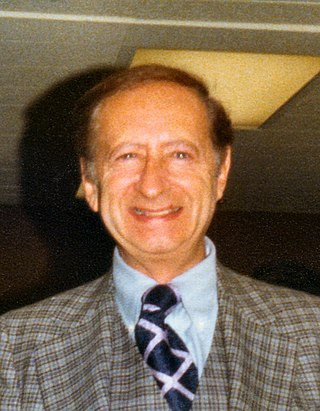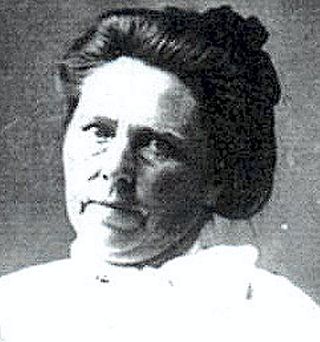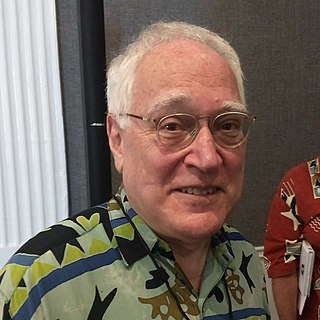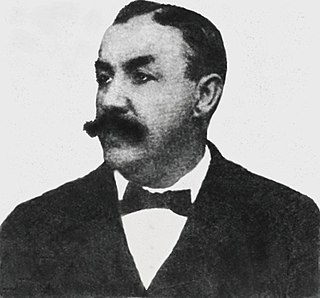
Robert Albert Bloch was an American fiction writer, primarily of crime, psychological horror and fantasy, much of which has been dramatized for radio, cinema and television. He also wrote a relatively small amount of science fiction. His writing career lasted 60 years, including more than 30 years in television and film. He began his professional writing career immediately after graduation, aged 17. Best known as the writer of Psycho (1959), the basis for the film of the same name by Alfred Hitchcock, Bloch wrote hundreds of short stories and over 30 novels. He was a protégé of H. P. Lovecraft, who was the first to seriously encourage his talent. However, while he started emulating Lovecraft and his brand of cosmic horror, he later specialized in crime and horror stories working with a more psychological approach.

A serial killer is typically a person who murders three or more people, with the murders taking place over more than a month and including a significant period of time between them. While most authorities set a threshold of three murders, others extend it to four or lessen it to two.

Edward Theodore Gein, also known as the Butcher of Plainfield or the Plainfield Ghoul, was an American murderer, suspected serial killer and body snatcher. Gein's crimes, committed around his hometown of Plainfield, Wisconsin, gathered widespread notoriety in 1957 after authorities discovered that he had exhumed corpses from local graveyards and fashioned keepsakes from their bones and skin. He also confessed to killing two women: tavern owner Mary Hogan in 1954, and hardware store owner Bernice Worden in 1957.
Contract killing is a form of murder or assassination in which one party hires another party to kill a targeted person or people. It involves an agreement which includes some form of compensation, monetary or otherwise. It is an illegal agreement. Either party may be a person, group, or organization. Contract killing has been associated with organized crime, government conspiracies, dictatorships, and vendettas. For example, in the United States, the Italian- and Jewish-American organized crime gang Murder, Inc. committed hundreds of murders on behalf of the National Crime Syndicate during the 1930s and '40s.
Harold Schechter is an American true crime writer who specializes in serial killers. He is a Professor Emeritus at Queens College, City University of New York where he taught classes in American literature and myth criticism for forty-two years. Schechter's essays have appeared in numerous publications including The New York Times, The Wall Street Journal, The Los Angeles Times, and the International Herald Tribune. He is the editor of the Library of America volume, True Crime: An American Anthology. His newest book, published in March 2021, is Maniac: The Bath School Disaster and the Birth of the Modern Mass Killer.

Herman Webster Mudgett, better known as Dr. Henry Howard Holmes or H. H. Holmes, was an American con artist and serial killer active between 1891 and 1894. By the time of his execution in 1896, Holmes had engaged in a lengthy criminal career that included insurance fraud, forgery, swindling, three to four bigamous illegal marriages, horse theft and murder. His most notorious crimes took place in Chicago around the time of the World's Columbian Exposition in 1893.
The Boston Strangler is the name given to the murderer of 13 women in Greater Boston during the early 1960s. The crimes were attributed to Albert DeSalvo based on his confession, on details revealed in court during a separate case, and DNA evidence linking him to the final victim.

William Anthony Parker White, better known by his pen name Anthony Boucher, was an American author, critic, and editor who wrote several classic mystery novels, short stories, science fiction, and radio dramas. Between 1942 and 1947, he acted as reviewer of mostly mystery fiction for the San Francisco Chronicle. In addition to "Anthony Boucher", White also employed the pseudonym "H. H. Holmes", which was the pseudonym of a late-19th-century American serial killer; Boucher would also write light verse and sign it "Herman W. Mudgett".

The Alienist is a crime novel by Caleb Carr first published in 1994 and is the first book in the Kreizler series. It takes place in New York City in 1896, and includes appearances by many famous figures of New York society in that era, including Theodore Roosevelt and J. P. Morgan. The sequel to the novel is The Angel of Darkness. The story follows Roosevelt, then New York City police commissioner, and Dr. Laszlo Kreizler, as their investigative team attempts to solve gruesome murders through new methods including fingerprinting and psychology. The first murder victim investigated is a 13-year-old immigrant who has had his eyes removed, his genitals removed and stuffed in his mouth, and other injuries. The investigators deal with various interest groups that wish to maintain the status quo regarding the poor immigrant population in New York City.

Jerome Henry "Jerry" Brudos was an American serial killer and necrophile who murdered at least four women in Oregon between 1968 and 1969. His killings are primarily known for centering around Brudos' fetish for women's shoes.
Jack the Ripper, an notorious serial killer who terrorized Whitechapel in 1888, has been featured in works of fiction ranging from gothic novels published at the time of the murders to modern motion pictures, televised dramas and video games.

Belle Gunness, born Brynhild Paulsdatter Størseth, nicknamed Hell's Belle, was a Norwegian-American serial killer who was active in Illinois and Indiana between 1884 and 1908. Gunness is thought to have killed at least fourteen people, most of whom were men she enticed to visit her rural Indiana property through personal advertisements, while some sources speculate her involvement in as many as forty murders making her one of the most prolific female serial killers in history. Gunness seemingly died in a fire in 1908, but it is popularly believed that she faked her death. Her actual fate is unconfirmed.

The Devil in the White City: Murder, Magic, and Madness at the Fair That Changed America is a 2003 historical non-fiction book by Erik Larson presented in a novelistic style. Set in Chicago during the 1893 World's Columbian Exposition, it tells the story of World’s Fair architect Daniel Burnham and of H. H. Holmes, a criminal figure widely considered the first serial killer in the United States.
An angel of mercy or angel of death is a type of criminal offender who is usually employed as a medical practitioner or a caregiver and intentionally harms or kills people under their care. The angel of mercy is often in a position of power and may decide the victim would be better off if they no longer suffered from whatever severe illness is plaguing them. This person then uses their knowledge to kill the victim. In some cases, as time goes on, this behavior escalates to encompass the healthy and the easily treated.

Leslie S. Klinger is an American attorney and writer. He is a noted literary editor and annotator of classic genre fiction, including the Sherlock Holmes stories and the novels Dracula, Frankenstein, and Strange Case of Dr. Jekyll and Mr. Hyde as well as Neil Gaiman's The Sandman comics, Alan Moore's and Dave Gibbons's graphic novel Watchmen, the stories of H.P. Lovecraft, and Neil Gaiman's American Gods.

Robert Nixon was an American serial killer, born in the small town of Tallulah, Louisiana, who confessed to five murders and multiple assaults, including the Los Angeles "brick bat murders" of 1937. Depicted with racist imagery in the mainstream press after his arrest, he was given the nickname the "Brick Moron" as he killed his victims with bricks and was depicted as dimwitted.

The Shining Girls is a science fiction thriller novel by South African author Lauren Beukes. The book centers on a mysterious drifter who murders the titular "shining girls" and one victim's attempts to expose him.

Frederick "Freddy" Lounds is a fictional character in the Hannibal Lecter series, created by author Thomas Harris. Lounds first appears in the 1981 novel Red Dragon as a foil to protagonist Will Graham. Lounds is ultimately murdered by the novel's primary antagonist, serial killer Francis Dolarhyde.

Franklin P. Geyer was an American police detective from Philadelphia, Pennsylvania, best known for his investigation of H. H. Holmes, one of America's first serial killers. Geyer was a longtime city employee of the Philadelphia Police Department, and in 1894 was assigned to investigate the Holmes-Pitezel Case. He published the story in his book The Holmes-Pitezel Case: a history of the greatest crime of the century and of the search for the missing Pitezel children.

The Dark Pictures Anthology: The Devil in Me is a 2022 interactive drama and survival horror video game with slasher horror elements developed by Supermassive Games and published by Bandai Namco Entertainment. It is the fourth installment in The Dark Pictures Anthology, after Man of Medan (2019), Little Hope (2020), and House of Ashes (2021). It is also the final game in the anthology's first season. Continuing the series' premise, the game features a cast of five playable protagonists and a multilinear narrative influenced by player choices. Its decision-making scenes can significantly alter the trajectory of the plot and change the relationships between the main characters; some can lead to the permanent death of the protagonists.














